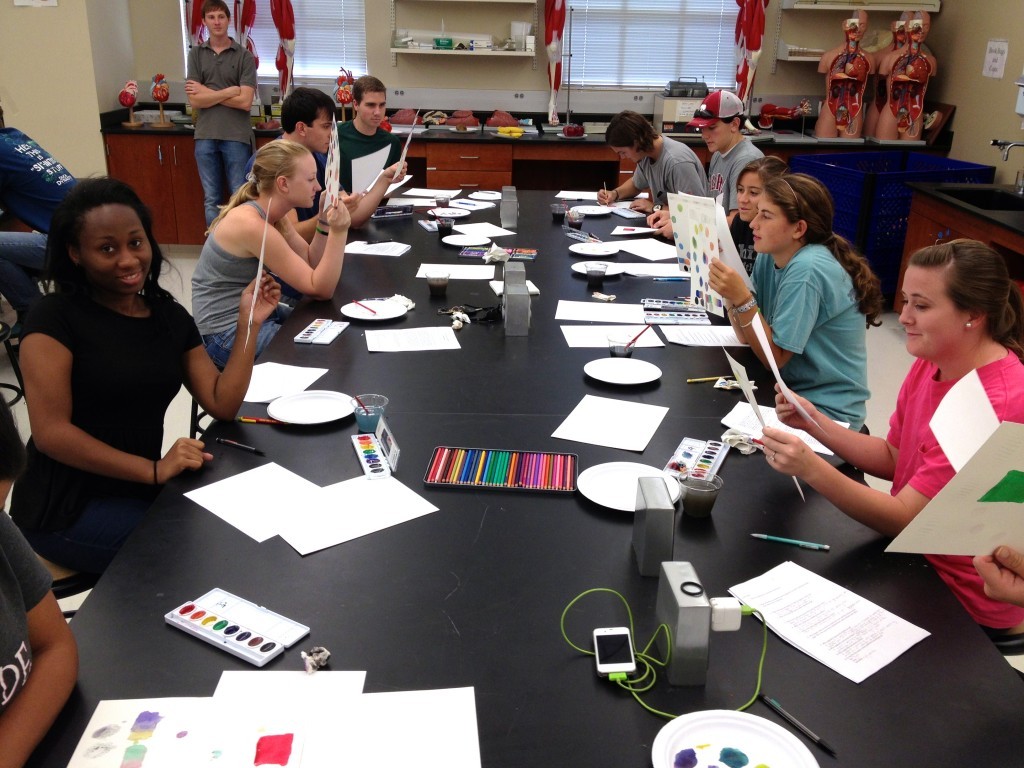Instructor: Juan Lopez-Bautista
Course: General Botany (BSC 360) & Biology of Algae (BSC 464)
Audience: Undergraduates
Focused on the study of plants, General Botany and Biology of Algae use active learning strategies to prepare students to recognize and resolve problems in the field of biology. The course features traditional lecture and lab components.
What are your favorite teaching strategies in this class?

I use a mix of traditional and non-traditional lecturing, lab exercises, hands-on experience with living materials, interactive exercises, readings, weekend field trips, and clicker quizzes.
Traditional lectures and exercises provide a solid foundation upon which to build. Living materials are more exciting than preserved samples, and interactive exercises (e.g., a Facebook page, video analyses, concept maps, forensic study cases, etc.) keep students involved with the materials.
For example, one of my favorite exercises is the concept map, which works like this: after lecturing on a subject — for example, the complex life cycles of agarophytes, an algae producing agar — I pass around a list of technical terms, classified in processes, terms, and conditions. Using this information, students work in groups to correctly organize the concepts in a diagram or pathway.
Additionally, field trips to the University’s research stations engage students and allow them to experience real situations while interacting and learning with their peers.
What challenges does this course present, and what are your solutions?
My biggest challenge is keeping students engaged in the class and lecture. In class, I present each lecture with a real case study — forensic, ecological catastrophe, human disease problem, job decisions — and from there we start discussing why it’s important to study that particular subject.
In the lab, we either use existing material or go out on campus and collect new living materials to study that day. Students always find amazing things while viewing these samples under a microscope.
For instance, students learn the collection protocols for field samples while visiting three areas: UA campus, Lake Lurleen State Park, and the Dauphin Island Sea Lab. In these locations we practice benthic and plankton sampling; then, in the lab, we observe the living algal communities, and of course, we collect the algae and other aquatic organisms that feed off of it. When students observe the algal samples under the microscope, they witness several biological processes in vivo — predation, competition, sexual reproduction. Students are always amazed to find these interactions occurring in a single drop of water!
Have you introduced something new to enrich or enliven this course?
I am always introducing new things. For example, we have competitions to see who can present the largest plant collection or break the previous records for algal collection or exam scores. Students sometimes bring food dishes made from plants to share with the class, or they go to the supermarket to learn more about plants. We also discuss the current news about plants, as well as my laboratory research.
I like to have the undergraduate and graduate students who work in my lab give short talks about their research, and at the end of the semester/year, we have a final lecture about their future plans and how to approach the uncertainties of the job market and graduate school.
What else do you want students to leave your courses knowing?
I want my students to open their imaginations to see our planet in new ways and to appreciate its biodiversity, and I also want to stimulate their minds and encourage them to transfer these ideas into their own lives.
Lopez-Bautista is a professor in the UA Department of Biological Sciences.